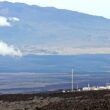Greg Thielmann, senior fellow at the Arms Control Association and former director of the Strategic, Proliferation, and Military Affairs Office of the State Department’s Bureau of Intelligence and Research
November 25, 2013
The Geneva agreement represents an historic breakthrough in the long-standing impasse over Iran’s nuclear program. The agreement will halt or reverse the Iranian nuclear activities of most acute proliferation concern over the next six months and provide additional means for the international community to monitor those activities while a long-term comprehensive agreement is negotiated. During this time, the P5+1 will retain the core sanctions on oil and finances that will continue to provide Iran a strong incentive to resolve concerns about the nature of its nuclear program.
This first-phase agreement represents a win-win outcome, giving both negotiating teams the results most needed by their governments. Consequently, it carries with it the best chance of being faithfully implemented by the sides during the next six months in a manner that builds the level of trust critical to achieving an ultimate resolution. Although the P5+1 avoided the maximalist approach advocated by some in Congress and some regional governments, it still achieved more than had been proposed earlier this year by the six partners and more than many observers thought possible.
While there is no guarantee that the ultimate goal of securing a peaceful path for Iran’s nuclear program will be achieved, the past trajectory has been altered. Instead of Iran’s NPT breakout options becoming ever shorter, its middle-class suffering ever-greater duress, and the risk of war growing more likely, the parties can now move toward increasing confidence in the peaceful nature of Iran’s nuclear program and ending sanctions.
Greg Thielmann
senior fellow
Arms Control Association, and former director of the Strategic, Proliferation, and Military Affairs Office of the State Department’s Bureau of Intelligence and Research













